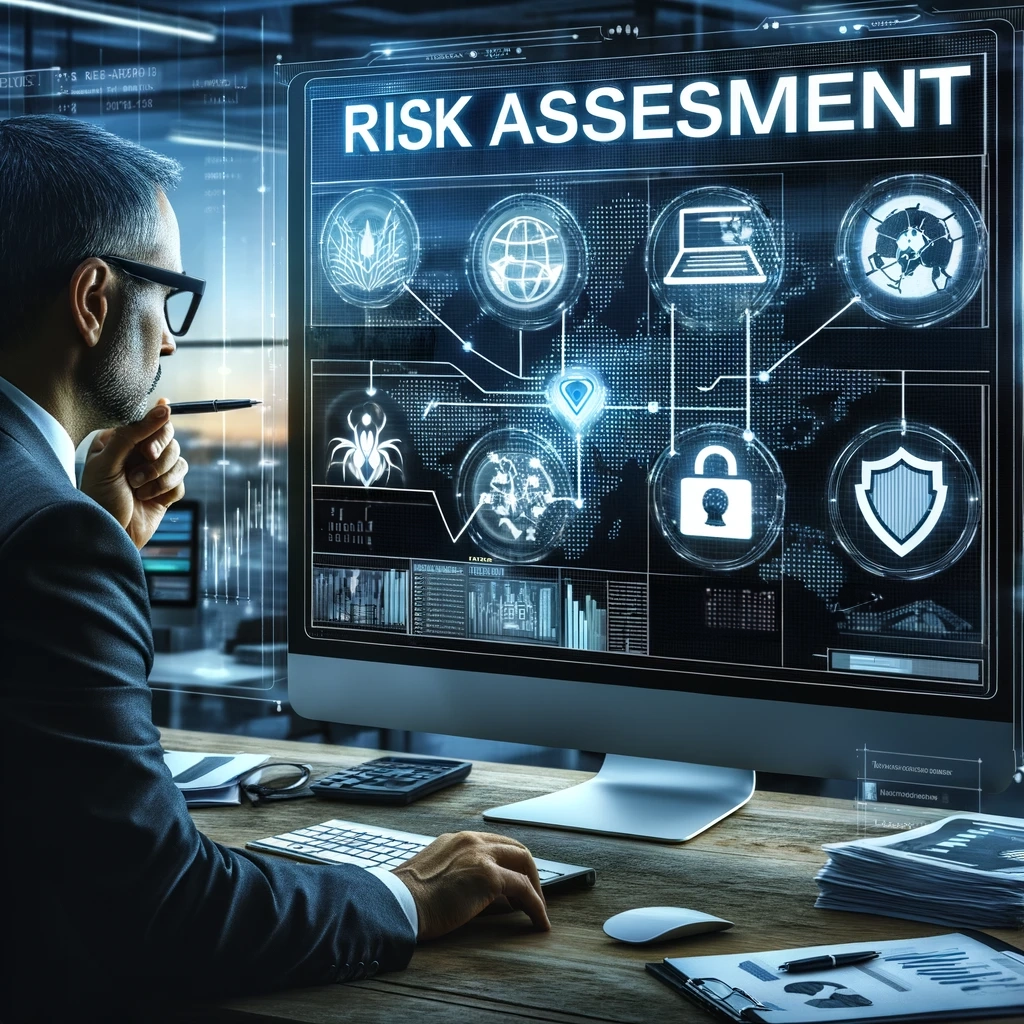As we usher in a new year, one critical task that should top your organizational to-do list is conducting a vendor risk assessment. This process is not just a formality; it’s a vital step towards safeguarding your organization against a myriad of risks that third-party vendors could introduce, ranging from cybersecurity threats to operational disruptions and beyond.
The Significance of Vendor Risk Assessments
In today’s interconnected business environment, vendor risk assessments play a pivotal role in maintaining operational integrity. They act as a shield, protecting your organization from data breaches, service disruptions, financial losses, and legal penalties. With the landscape of digital threats constantly evolving, ensuring your vendors uphold stringent cybersecurity standards is more crucial than ever.
Identifying Potential Risks
The first step in a vendor risk assessment is identifying potential risks, which can vary widely:
- Cybersecurity Threats: With cyber-attacks becoming more sophisticated, assessing the cybersecurity posture of your vendors is paramount.
- Financial Instability: The financial health of your vendors can directly impact their ability to deliver services reliably.
- Legal Compliance: Vendors must comply with laws and regulations relevant to your industry to avoid legal complications.
- Reputational Risks: Associations with poorly performing vendors can tarnish your brand’s reputation.

Evaluating and Prioritizing Risks
After identifying potential risks, the next step is their evaluation and prioritization. This involves assessing the likelihood of each risk and its potential impact, allowing you to allocate resources effectively to mitigate the most critical risks first. Implementing a thorough vendor due diligence process is essential in this phase to gather all necessary information for informed decision-making.
Developing Mitigation Strategies
Developing strategies to mitigate identified risks is a proactive approach to vendor management. This may involve enhancing cybersecurity measures, renegotiating contracts to include more favorable terms, or even replacing high-risk vendors. The goal is to minimize exposure to risks without compromising on the quality of services or products received.

Continuous Monitoring and Management
Vendor risk assessment is not a one-off task but a continuous process. Regular monitoring of vendor performance and compliance ensures that any emerging risks are identified and managed promptly. This ongoing vigilance is crucial for adapting to changes in the vendor’s operations or the external risk landscape.
The Process of Conducting a Vendor Risk Assessment
Conducting a vendor risk assessment involves several key steps:
- Gathering Information: Comprehensive information about the vendor’s operations, security practices, financial health, and compliance records is essential.
- Assessing Risk Levels: Analyze the gathered information to assess the vendor’s risk levels across various domains, such as cybersecurity, compliance, and operational reliability.
- Decision Making: Based on the assessment, decide on the best course of action to manage identified risks effectively.
Conclusion
Vendor risk assessments are an integral component of an organization’s risk management and cybersecurity strategy. By systematically assessing and managing the risks associated with third-party vendors, organizations can protect themselves from potential negative outcomes and maintain their operational integrity and compliance with regulations.
Next Steps
Engage with Hifen: Ready to elevate your vendor risk management strategy? Contact us at [email protected] and let our expertise guide you through the complexities of vendor risk assessments.
Whitepaper Download: Ensure your vendor risk assessments cover all necessary bases. Download our whitepaper, “50 Questions You Should Include in Your Vendor Risk Assessment“, and gain the insights you need to conduct thorough assessments.
FAQs
What is a vendor risk assessment?
A vendor risk assessment is a process to identify, evaluate, and manage the risks associated with outsourcing services or procuring products from third-party vendors.
Why is cybersecurity pivotal in vendor risk assessments?
Cybersecurity is crucial because it helps prevent data breaches and protect sensitive information from unauthorized access or theft.
Recommended frequency for conducting vendor risk assessments?
Vendor risk assessments should be conducted at least annually or as part of the vendor selection process and reviewed whenever there are significant changes in the vendor’s services or the regulatory landscape.
Common mitigation strategies for managing vendor-related risks?
Strategies include implementing additional security controls, contract renegotiations, regular audits, and, if necessary, finding alternative vendors.
Enhancing vendor performance through rigorous risk assessments?
Regular assessments and feedback can motivate vendors to improve their services and compliance, thereby enhancing their performance and reliability.
Initial step in the vendor risk assessment process?
The first step is gathering detailed information about the vendor, including their security practices, financial health, and compliance with relevant regulations.
The contribution of continuous monitoring to robust vendor risk management?
Continuous monitoring allows organizations to detect and respond to changes in vendor risk profiles promptly, ensuring that risks remain within acceptable thresholds.
By taking proactive steps towards comprehensive vendor risk assessment, organizations can significantly mitigate potential risks, ensuring a stable and secure operational environment.

